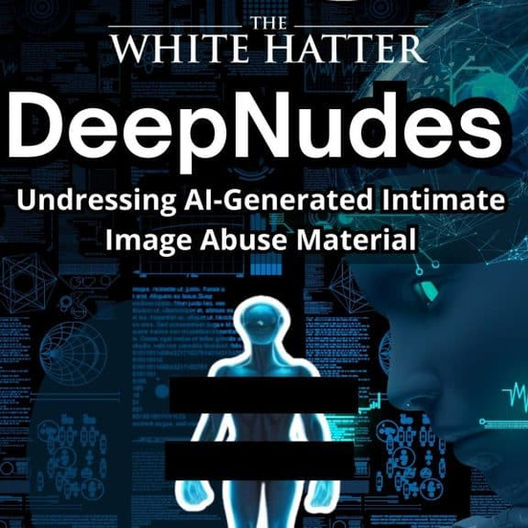What is The Deep and Dark Web?
- The White Hatter

- Oct 24, 2022
- 5 min read
Updated: May 19
During our student presentations over the past year, we’ve noted an increase in the number of questions from both middle and high school students about the “Dark Web.” Why is this happening? We hypothesize that media, in all its forms, is shining a light on this part of the internet, which may spark teens' curiosity to explore it online. Given the mystique surrounding the Deep/Dark Web—and the fact that teens are naturally curious about what they can find online—we felt this chapter would be helpful for parents. Knowledge, paired with understanding and application, is power. With the information provided here, you can now have informed discussions with your child if and when the topic of the Deep/Dark Web comes up.
Many parents and caregivers are unaware that the World Wide Web has three distinct areas that can be accessed via a computer or smartphone:
#1: The Surface Web (Open Web)
This is the most commonly used part of the internet, where public-facing webpages are accessed via traditional browsers like Google Chrome, Safari, Microsoft Edge, and Firefox. Websites on the Surface Web are usually labeled with domain extensions like “.com,” “.org,” “.ca,” and can be easily located through popular search engines. When you Google something online, you are searching the Surface Web.
#2: The Deep Web
The Deep Web rests below the Surface Web and accounts for approximately 90% of all websites on the internet. This part of the web is not necessarily indexed, can only be accessed via specialized browsers, and is not searchable through traditional search engines like Google. Although many believe that accessing the Deep Web is illegal, it is not. And while it's often assumed to be full of inappropriate content, much of it actually includes:
Scholarly articles and academic journals from universities
Databases not connected to the internet but to an internal intranet
Financial accounts like banking and retirement information
Email and social messaging accounts
Private enterprise databases
Privacy-sensitive information such as medical documentation
Legal files
Without knowing it, many readers have likely accessed the Deep Web. For example, if you visit a Surface Web page that uses a paywall or password to access private, non-indexable content, you’ve accessed part of the Deep Web. So yes, portions of the Deep Web can still be accessed via links on a surface-based website. This is why users browsing the Surface Web may still encounter piracy sites, radicalized forums, or disturbing and violent content.
One significant benefit of the Deep Web is that it offers those living under oppressive or restrictive governments protection and privacy from persecution. Because of its anonymity, it’s difficult for government officials to monitor, and it allows access to uncensored news. This is why the Deep Web is often used by civil liberties groups, journalists, political activists, and others who seek increased online privacy.
Since Deep Web content isn’t indexed publicly, it can be slower to access than the Surface Web. It’s also less visually engaging, which is why teens often don’t linger—it lacks the design and usability features they’re accustomed to.
#3: The Dark Web
The Dark Web is a smaller, unregulated subset of the Deep Web. Dark Web sites are not indexed, obscure the user's IP address, and are only accessible via a specialized browser such as “The Onion Router” (commonly known as “TOR”), which is free to download.
Contrary to popular belief, accessing the dark net isn’t something a person stumbles upon by accident—it requires specific knowledge. Dark Web URLs consist of seemingly random characters and end in “.onion,” which adds another layer of complexity.
Because of this, it’s important for parents to understand: youth cannot accidentally access the Dark Web—they must do so intentionally. Due to its nature, the Dark Web is known for exposing users to various types of malicious malware, such as:
Keyloggers
Botnet malware
Ransomware
Phishing malware
Without the appropriate privacy and security protocols in place, users accessing the Dark Web are at a heightened risk of being hacked—especially if they click on links. There are even sites known as “Drive-By Sites,” where simply landing on the page can result in malware being covertly downloaded onto a device or network if proper protections aren’t in place.
The Dark Web is infamous for its links to illegal content and criminal marketplaces, where users can purchase unlawful goods or services. However, like the Deep Web, the legality of the Dark Web depends on how it’s used.
Here are some examples of illegal activities we’ve observed on the Dark Web:
Trading or purchasing stolen credit cards
Buying or selling personally identifiable information for identity theft
Selling firearms
Selling illegal drugs
Selling stolen property
Engaging in illegal gambling
Human trafficking
Hiring cyber-attack services
Promoting terrorism
Trading or selling Child Sexual Abuse Material (CSAM)
Necrophilia content (videos involving sex with deceased individuals)
It’s important to differentiate between the Deep Web and the Dark Web. The Deep Web includes all content not openly accessible via search engines, such as paywalled websites, internal databases, and private government documents. The Dark Web, by contrast, is a much smaller subset of the Deep Web, consisting of only a few thousand websites—far fewer than most people assume.
What Should You Do If You Learn Your Child Is Accessing the Deep or Dark Web?
Don’t panic.
Your child hasn’t necessarily done anything wrong. It’s important to understand the context behind why they accessed it. Often, it’s just curiosity.
Have an open and honest discussion.
Talk about what you’ve learned from this chapter. Help your child think critically about their online actions and the content they’ve encountered. Remember, curiosity is natural for teens—especially online.
Take preventive action if needed.
If a younger teen is accessing the Dark Web, consider blocking the TOR browser (or others like Subgraph OS, Tails, Opera, Whonix, and Waterfox) on their devices and home router. More importantly, explain why you’re taking this action. Keep in mind that the TOR browser can be used on cellphones, laptops, or desktop computers.
Demystify the Deep and Dark Web.
The appeal lies in the mystery. Talking openly about what’s really there—and why it can be risky—can go a long way in reducing its allure.
While concerns about illegal activity on the Dark Web are important for parents to understand, it’s essential to place these concerns in context. Today, drugs, stolen data, and harmful content are easily accessible via mainstream messaging apps, and self-harm content is widespread on popular social media platforms. In comparison, teen involvement in the Dark Web remains relatively rare. Parents worried about their children’s online safety should also focus on the more common dangers found on youth-centric platforms—especially those driven by algorithms that can promote self-harm and hatred.
Recommended Resource
Here’s a great video for parents and caregivers from our friends at ThinkUKnow that highlights many of the points discussed in this chapter:👉 Dark Web Explained – ThinkUKnow














